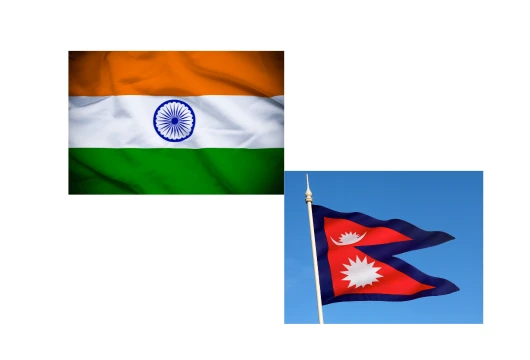India and Nepal Unite for Renewable Energy Progress
In a significant step towards advancing renewable energy and regional cooperation, the Indian Renewable Energy Development Agency Ltd. (IREDA) has joined hands with SJVN Ltd., GMR Energy Ltd., and Nepal Electricity Authority (NEA) to develop the 900 MW Upper Karnali Hydropower Project in Nepal.
The agreement, signed in New Delhi on January 17, 2025, outlines the joint venture’s framework for project construction, operation, and maintenance under the Build-Own-Operate-Transfer (BOOT) model. This initiative strengthens India-Nepal energy ties and enhances South Asia’s energy security and commitment to sustainability.
900 MW Upper Karnali Hydropower Project to Drive Sustainability
Hydropower is a vital part of the global transition to renewable energy, and this project is set to become a cornerstone of clean energy development in the region. The Upper Karnali Hydropower Project will harness Nepal’s rich water resources to generate sustainable electricity, benefitting both nations economically and environmentally.
The BOOT model, which allows private and public stakeholders to develop and operate the project for 25 years before transferring ownership to Nepal, ensures a well-structured, long-term approach to energy production. This collaboration aligns with India’s Neighborhood First policy, reinforcing its commitment to fostering stronger regional ties.
IREDA CMD Pradip Kumar Das emphasized the significance of this partnership, stating:
“This agreement is a landmark step toward realizing our shared vision for renewable energy and sustainable development. The Upper Karnali project will set a precedent for cross-border cooperation, bringing economic and environmental benefits to both nations.”
Upper Karnali Hydropower Project: A Game-Changer for Renewable Energy
Located in Nepal, the Upper Karnali project maximizes hydropower potential while promoting long-term sustainability. Key highlights of the project include:
- Capacity: 900 MW
- Operational Term: 25 years from CoD
- Development Model: BOOT (Build-Own-Operate-Transfer)
- Environmental Impact: Significant reduction in carbon emissions and dependency on fossil fuels
This project is expected to boost Nepal’s domestic energy supply, with surplus electricity available for export, strengthening regional energy trade. Additionally, it will create new employment opportunities and support Nepal’s infrastructure development.
Strengthening India-Nepal Energy Cooperation
The India-Nepal energy partnership has been growing steadily, with hydropower playing a central role in bilateral cooperation. India has supported Nepal’s energy sector, providing financing, technology, and expertise to accelerate renewable energy adoption.
The Upper Karnali project is a testament to the increasing regional collaboration in the energy sector, addressing key challenges such as:
- Energy Security: Ensuring stable and sustainable power supply in Nepal and India
- Climate Action: Reducing greenhouse gas emissions by replacing fossil fuel-based energy sources
- Economic Development: Encouraging investment, job creation, and infrastructure enhancement in Nepal
With India’s IREDA, SJVN Ltd., GMR Energy Ltd., and Nepal’s NEA coming together, this project represents a historic step toward an integrated South Asian energy network.
IREDA’s Role in South Asia’s Green Energy Future
As a key player in India’s renewable energy financing sector, IREDA has been actively promoting clean energy projects nationwide. With its participation in the Upper Karnali project, IREDA is expanding its reach to South Asia, enabling regional energy transformation.
IREDA has been instrumental in financing wind, solar, and hydropower projects, helping India achieve its net-zero commitments. This initiative further demonstrates the organization’s commitment to scaling sustainable energy solutions beyond national borders.
According to Pradip Kumar Das:
“IREDA’s vision goes beyond financing projects. We are committed to catalyzing regional cooperation, fostering sustainability, and ensuring energy security for all. This hydropower initiative will serve as a benchmark for future international collaborations in clean energy.”
Key Benefits of the Upper Karnali Hydropower Project
This project will bring numerous economic, environmental, and social benefits to Nepal and the broader South Asian region:
- Sustainable Energy Generation – 900 MW of clean electricity will significantly reduce reliance on fossil fuels.
- Improved Energy Access – Nepal’s energy infrastructure will receive a significant boost, ensuring a stable electricity supply.
- Regional Energy Trade – The surplus power will contribute to India and Nepal’s cross-border electricity trading
- Economic Growth – The project will generate employment opportunities and support Nepal’s local communities.
- Environmental Conservation – Hydropower is a low-carbon alternative, reducing greenhouse gas emissions.
By leveraging hydropower potential, the initiative also sets the stage for future Indo-Nepal collaborations in renewable energy.
A Model for Future Green Energy Projects
The Upper Karnali Hydropower Project is not just a standalone venture but a blueprint for future cross-border renewable energy projects. As South Asia grapples with increasing energy demand and climate change challenges, collaborative efforts like this will play a crucial role in securing clean and reliable energy solutions.
Future Prospects:
- Expansion of India-Nepal hydropower partnerships
- Increased investments in solar, wind, and other renewables
- Strengthening of regional energy grids for efficiency and stability
Nepal’s abundant hydropower resources position it as a key player in South Asia’s green energy transition. India’s expertise in renewable energy financing and development will continue to drive progress in this sector.
A Brighter, Greener Future for South Asia
Signing the Joint Venture Agreement for the Upper Karnali Hydropower Project marks a pivotal moment in South Asia’s renewable energy journey. This landmark initiative demonstrates India and Nepal’s commitment to sustainable growth, energy security, and regional cooperation.
By working together, these nations are pioneering a cleaner, greener future, setting an example for international partnerships in the renewable energy sector. As the world shifts towards net-zero targets, projects like Upper Karnali will be instrumental in shaping a sustainable tomorrow.
With strong leadership, investment, and collaboration, South Asia can emerge as a global hub for renewable energy innovation—and this is just the beginning.
For more in-depth analysis and inspiring climate news, click here.

